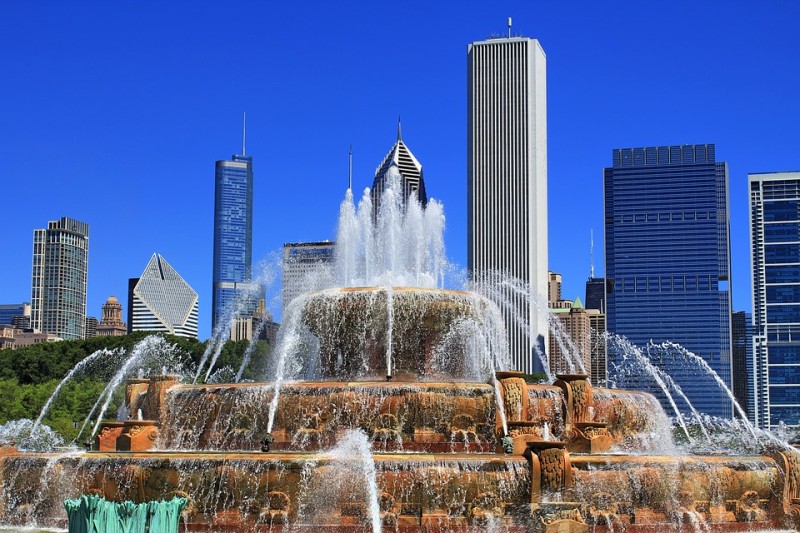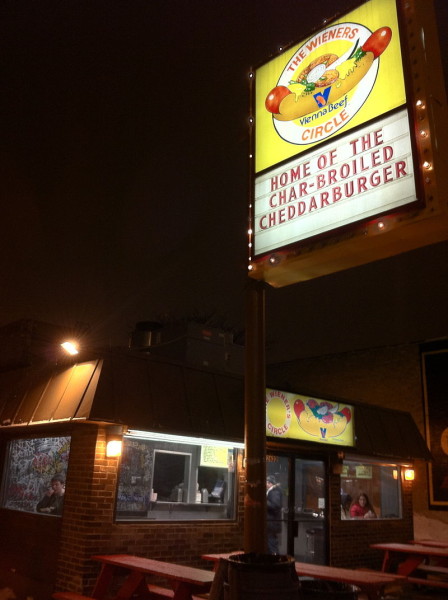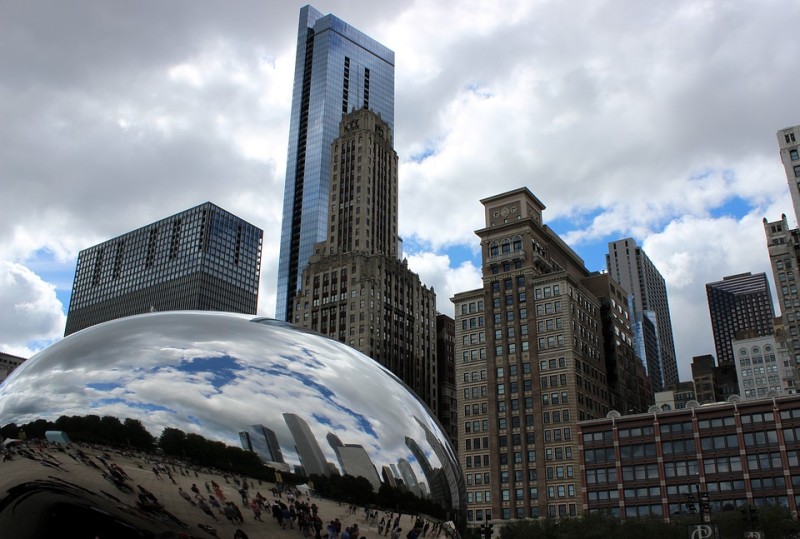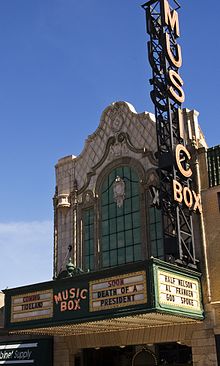Chicago, Illinois; America’s Second City

Things to do in Chicago, Illinois
Chicago is one of the most popular and populated cities in the Midwest. Along with Chicago’s large population, the city has a number of landmarks that are well known to many across the country. Traveling to Chicago doesn’t have to be the most expensive vacation you take, with the many parks, museums and cheap eateries scattered throughout The Second City, you can have a blast in Chicago, without spending much money at all. Chicago is a great city to visit year-round, unless you have a hard time with cold climates, then you may want to plan your visit during the spring and summer months.
The earliest history recorded in Chicago begins in 1673, when two Frenchmen by the names of Jacques Marquette and Louis Joliet arrived in the area. Ultimately, the French did not settle in Chicago. It wasn’t until the 1830s when Chicago’s population started growing. In 1837 Chicago was officially made a city.
During the 1840s and 1850s, Chicago’s population rose to 30,000. When The Great Chicago Fire started in 1871, it spread through Downtown Chicago. The fire lasted 2 days and as a result one third of the Chicago population became homeless and 300 people were killed. The Chicago Fire turned out to be yet a minor setback for the city of Chicago, as industry in Chicago was still strong after the fire. Chicago was quickly rebuilt and was growing at an alarming rate by the late 19th century. By 1900, the population of Chicago reached 1.7 million. Today Chicago is home to 2.7 million people and still continues to prosper each year.

Photo via Pixabay
The Wieners Circle
In the neighborhood of Lincoln Park, Chicago sits The Wieners Circle; a tasty Chicago hot dog restaurant that is well known for its Maxwell Street Polish, char-dogs, char-burgers, and cheese fries, but notorious for its foul-mouthed employees that love to verbally abuse the late night customers. The customers aren’t afraid to shout back, as it’s all part of the experience. Just don’t bring the kids past 9 pm.

Photo via Wikipedia
The Wieners Circle opened in 1983. In the early 1990s one of the owners of The Wieners Circle, Larry Gold, swore at a drunk and distracted customer in order to get his attention. This was the start of a tradition at the restaurant, as The Wieners Circle later became known for it’s late night verbal abuse towards customers. The dialogue between the staff and customers during the late night hours is widely known for being incredibly foul and aggressive. The staff has also been known to shout demands for a tip after each customer has been served. The Wieners Circle continues to serve up delicious char-dogs, which includes a grilled Vienna Beef hot dog on a warm poppy seed bun, that is then topped with mustard, onions, relish, dill pickle spears, tomato slices, sport peppers and a dash of celery salt.

Vienna Red Hot at The Wieners Circle Photo via Wikipedia
Millennium Park
Located in the Loop community area in Chicago is the public park Millennium Park, named as an intention to celebrate the third millennium. As of 2017, Millennium Park has become the number one tourist attraction in the Midwestern United States. The city’s annual Christmas tree lighting is also held at Millennium Park each year. Millennium Park is a public art venue that includes 4 separate artistic highlights which include Jay Pritzker Pavilion, Crown Fountain, Lurie Garden and Cloud Gate.

Millennium Park photo via Wikipedia
Cloud Gate
Cloud Gate, or “The Bean,” is located at The AT&T Plaza in Millennium Park. The AT&T Plaza opened in July 2004 and unveiled the Cloud Gate sculpture during the grand opening weekend. The plaza has become a prime location to view the McCormick Tribune Plaza and Ice Rink. The plaza also hosts Christmas caroling during the holidays. Cloud Gate was sculpted by Anish Kapoor and cost $23 million. The reflective steep sculpture was inspired by liquid mercury and makes for a unique reflection of visitors, the Chicago’s skyline and the sky. Cloud Gate has been named the top third thing to do in Chicago from Trip Advisor, so expect a crowd when you plan your next visit.

Cloud Gate Photo via Pixabay
Galloping Ghost Arcade
A mere 15 miles west from Chicago sits The Galloping Ghost Arcade, the largest video game arcade in the USA. The Galloping Ghost Arcade opened on August 13th, 2010 and features over 130 arcade games that were on the verge of destruction. In 2014 the Galloping Ghost Arcade had achieved an inventory that offered over 440 arcade games, that had come from all over the world. The inspiration for the Galloping Ghost arcade came from “the lack of functioning arcades in the Chicago area.”
The Galloping Ghost Arcade charges a $20 entrance fee, which allows guests access to hours of gaming without the hassle of ensuring they have enough quarters and eliminating the need to exchange currency for arcade tokens. You may also purchase weekly, monthly and yearly memberships, as well as a $3,000 lifetime membership. The Galloping Ghost Arcade is proud to offer classic arcade games such as Donkey Kong, Space Invaders and Pac-Man to less known games such as Primal Rage II, Hammer Away and Godzilla. The Galloping Ghost holds various tournaments and other events throughout the year.
Music Box Theatre
The Music Box Theatre in Chicago is a charming theatre just a stone’s throw away from Wrigley Field. The Music Box Theatre opened on August 22, 1929, when movie palaces in Chicago were designed to seat around 3,000 people. The Music Box Theatre is considered a little brother to the bigger movie palaces that could seat thousands of people, as the The Music Box sits 800 people. The Music Box Theatre was one of the first movie theaters in Chicago that didn’t have a stage, as movie theaters were used for both live theatre and film screenings at that time.
As grand movie palaces started to become a thing of the past, The Music Box was being taken advantage of as a theatre less and less. Between 1977 and 1983, The Music Box was used every once in a while for Spanish and Arabic language films. In 1983, The Music Box Theatre Corporation restored and reopened the theatre with a double feature film format, specializing in older films. The Music Box Theatre still continues to screen films today, old and new.
The Music Box Theatre claims to have a ghost that lives inside the theatre. Whitey was the manager of The Music Box Theatre from the theatre’s opening night in 1929 to November 24, 1977. Whitey and his wife, who was the theatre’s cashier, lived two blocks away from the theatre. According to the story of the the theatre ghost, Whitey returned on the eve of Thanksgiving in 1977 to close up the theatre. He fell asleep on the lobby couch and never woke up. The couch that Whitey fell asleep on is still on the theatre lobby today. Strange events are often attributed to the ghost of Whitey, but these attributions are usually made by superstitious individuals.

Photo via Wikipedia
The Art Institute of Chicago
The Art Institute of Chicago is located in Chicago’s Grant Park and is one of the oldest and largest art museums in the United States. The Art Institute of Chicago has been named the number one attraction on Trip Advisor, which makes sense as the museums hosts around 1.5 millions guests each year.

Photo via Wikimedia Commons
The Art Institute of Chicago is home to some of the most iconic pieces of art including Georges Seurat’s A Sunday Afternoon on the Island of La Grande Jatte – 1884, Pablo Picasso’s The Old Guitarist, Edward Hooper’s Nighthawks and Grant Wood’s American Gothic. The Art Institute of Chicago is the second largest art museum in the United States after The Metropolitan Museum of Art in New York City. The Art Institute is connected with the School of the Art Institute of Chicago, a top art school, making the museum one of the last remaining unified art institutions in the United States.

A Sunday Afternoon on the Island of La Grande Jatte Photo via Wikipedia
The Chicago Academy of Design was founded in a studio on Dearborn Street in 1866 by a group of 35 artists; with the plan to start a free art school that had its own art gallery. The institution was modeled after European art academies, such as the Royal Academy of Arts. Classes started at the academy in 1868, with tuition set at $10 a month. The Academy was so successful that the school was able to move to a different location. The brand new school opened at a five-story stone building on 66 West Adams Street on November 22, 1870.
Unfortunately for The Chicago Academy of Design, The Great Chicago Fire destroyed the building in 1871, forcing the Academy into serious debt. Some members of the failing institution tried to save The Chicago Academy of Design, but all efforts were failed and the Academy was eventually abandoned, with the intent to start a new organization, The Chicago Academy of Fine Arts. Once The Chicago Academy of Design officially went out of business, the new Chicago Academy of Fine Arts purchased its assets at auction. In 1882, The Chicago Academy of Fine Arts changed its named to The Art Institute of Chicago. In 2014, Trip Advisor reviewed millions of surveys completed by travelers and named The Art Institute of Chicago the world’s best museum. It has remained in the top 3 best museums in the world through 2016.
In April 2015, The Art Institute of Chicago received the largest gift of art in its history. The donation included works by Andy Warhol, Jasper Johns, Cy Twombly, Jeff Koons, Cindy Sherman and many other world renowned artists. The museum agreed to keep the donated work on displayed for at least 50 years.
The Art Institute of Chicago was featured in John Hughes hit comedy “Ferris Bueller’s Day Off” in 1986. The Art Institute of Chicago is a must-see attraction the next time you find yourself in Chicago with the family.

Photo via Wikipedia
Chicago, Illinois is a great family destination to put on your travel bucket list. With so many fascinating restaurants, parks and museums to explore, it’s difficult to find a dull moment in The Windy City. For more information on things to do in Chicago, check out the official tourism board website.

Photo via Wikipedia








